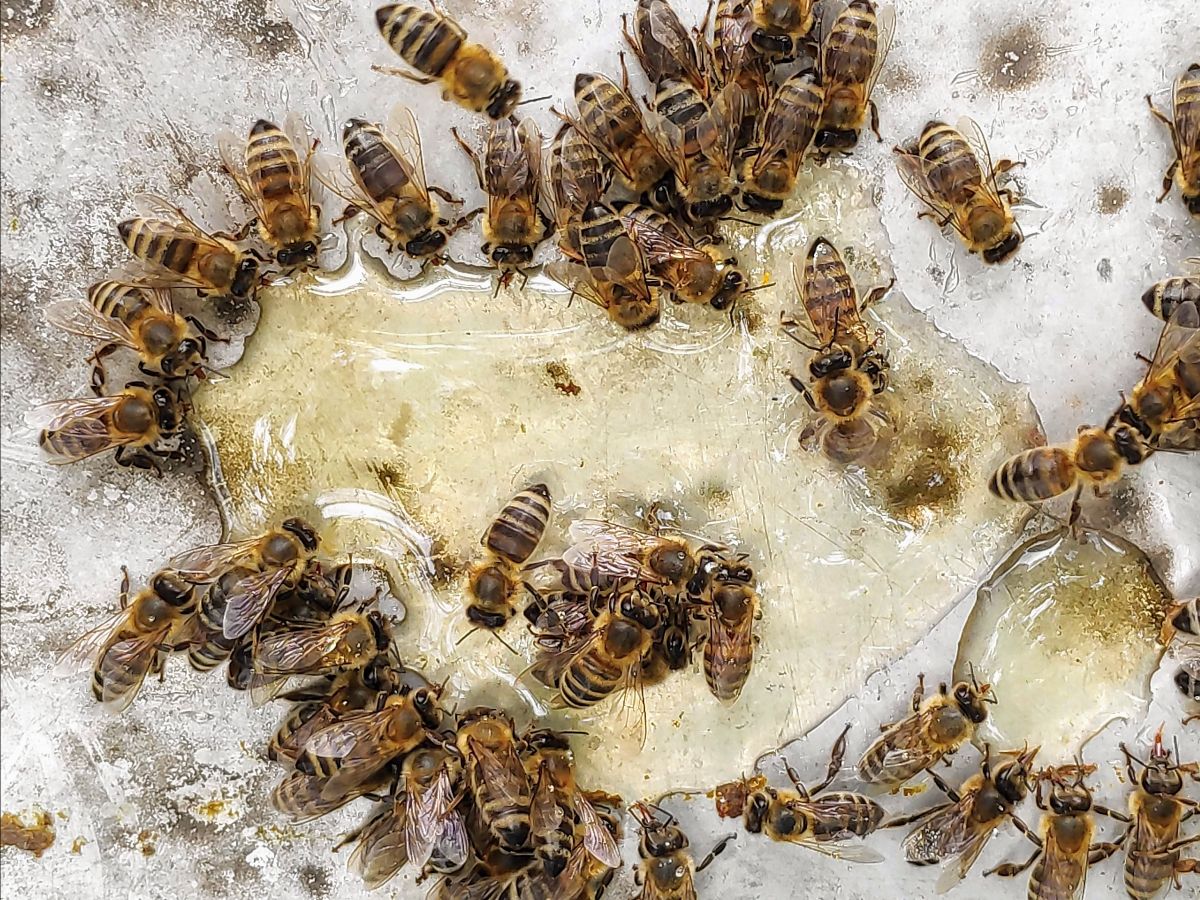
The forecast for the northeast can be unpredictable in the spring. One day it could be sunny and in the 60s and the next it could be mid-30s and accumulating snow! You may be wondering how colder weather affects your plans for installing your nucs and packages. In general, the weather shouldn't delay the installation, though you should avoid rainy weather, and choose a time/day when there is less wind.
During cold nights the bees, from both packages and nucs, will cluster together to maintain their critical temperature. Bees keep themselves (and in the case of a nuc, also their brood) warm by tightly clustering together and trapping warmed air between their bodies. This ability to keep themselves warm is innate in the bees' biology, and even nucs and packages that are newly arrived from southern sources will do this successfully.
Your job is to be prepared to do an efficient install and make sure they have access to honey (in nucs) or syrup (in both packages and nucs) to provide an uninterrupted source of the carbohydrate "fuel" they need for keeping themselves warm.
How to install nucs in cold weather
When you arrive at home with your bees, set the nuc box next to their new home (not on top of it if it is windy) and immediately open the door on the front end of the Pro Nuc box. You should delay installing if it is raining, or very windy, but as soon as possible, transfer the bees into their new home. When installing in air temperatures in the 40s, plan ahead so that you can do the installation efficiently and get all the frames placed in their new home without delay. This isn't the day to spend time looking over the frames and searching for the queen! Make sure to keep all the frames of the nuc together and in the center of the box for the time being. If you have a screened bottom board, make sure the tray is in place. For all colonies insert the entrance reducer into the front entrance in the opening.
How to install packages in cold weather
If it's raining when you arrive at home, put your package in a cool, dark, indoor space (a cool basement is ideal). It's OK to hold them in this space for a night, or even for a day, or two. You can lightly spritz the screened side of the package with some 1:1 syrup a couple of times per day. They also have a can of sugar water in the package they can draw from. A towel laid loosely over the long sides of the package (but not completely covering it) will give your bees a quiet, dark environment.
While waiting for the weather to improve, plan your installation so you can do it as efficiently as possible and get the hive closed back up quickly. It's also very important that you have syrup available to your bees as soon as they have been hived, particularly if there is more rainy or cool weather ahead. Use the time to go over your feeding plans and how you will set up - and fill - the feeder once the bees are in the hive.
Do the installation on the first clear, calm day, as long as the air temperatures are in at least the low 40s (preferably higher, of course). In temperatures that low, you need to slightly vary the installation procedure. Instead of just dumping a few cups of bees over the frame where the queen in her cage is secured, you want to get nearly all of them out of the box. At the same time, you want to guard against haphazard dumping that allows lots of bees to fall on the ground outside the hive. In cool weather they will become chilled and unable to rejoin the colony. So, thump the box corner on the ground to consolidate the bees and immediately turn it upside down directly over the hive to shake out the bees. Repeat, as needed, until almost all the bees are in the hive. Then set the package container down into the hive to allow the remaining ones to find their way out to join the cluster. If you can get them all out of the package container, then you can simply add as many frames as needed to fill the box and not leave the container in the hive.
Install and fill whichever feeder you have chosen. When the hive is closed up, insert the entrance reducer in the front entrance. If you have a screened bottom board, make sure the tray is in place.
If the weather on the third day from the install (when you would normally check on the queen) is poor, it's OK to delay that for a day.
Keep a close eye on the syrup supply: do not let the bees run out. It is the only food/fuel they have until they can begin to forage. The rule of thumb when providing "emergency feed" for bees is that making sure it is available is more important than the brief cold exposure needed to check and resupply it. Even though you would normally plan on supplementing with syrup, in the case of a cold-weather installation, the normal syrup supply becomes "emergency feed" because the bees can't go out to gather nectar until the weather improves.

